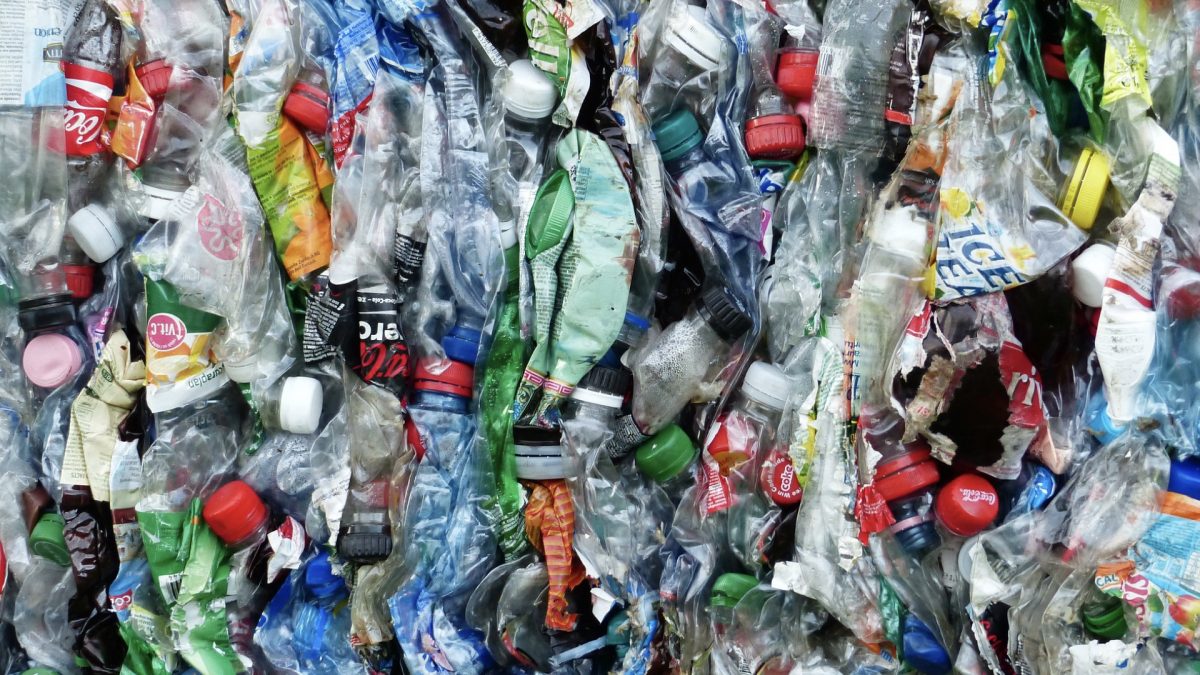“The number of new chemicals is increasing exponentially, with approximately 12,000 new substances added daily…”—yet data aren’t available on the hazards of even some of the high-volume chemicals. Bisphenol A (BPA) is one of the highest volume chemicals, with billions of pounds produced each year. Studies have raised concerns about its possible implication in the cause of certain chronic diseases, such as diabetes, obesity, reproductive disorders, cardiovascular diseases, birth defects, chronic respiratory diseases, kidney diseases, and breast cancer. Given this, BPA is the topic of my video Why BPA Hasn’t Been Banned.
A new study on the health implications of BPA comes out nearly every week. BPA was first developed over a hundred years ago as a synthetic estrogen, but it wasn’t until the 1950s that industry realized it could be used to make polycarbonate plastic, and “BPA rapidly became one of the most produced and used chemicals worldwide, even though it was a recognized synthetic estrogen” with hormonal effects. About a billion pounds are also used to line food and beverage cans, especially for tuna and condensed soups.
Today, nearly all of us, including our children, have BPA in our bodies, but not to worry: The government says up to 50 µg/kg per day is safe. Even those working in Chinese BPA factories don’t get exposed to more than 70 times lower than that so-called safety limit. Why then did exposure seem to affect male workers’ sperm counts? In the United States, the general population gets less than a thousand times lower than the safety limit, yet, even at those incredibly low doses, we still seem to be seeing adverse effects on thyroid function, weight control, blood sugar control, cardiovascular disease, liver function, and immune function. Indeed, “[t]he fact that there are significant adverse effects in populations exposed to BPA at concentrations [thousands of] times lower than the TDI [tolerable daily limit]…indicates that the safe exposure to BPA may be much lower than previously thought in humans.” Despite this, the limit hasn’t been changed. BPA has been banned from “baby bottles and sippy cups,” but nearly unlimited doses are still apparently okay for everyone else. What’s the disconnect?
It has to do with the fascinating world of low-dose effects of hormone-disrupting chemicals. “For decades, studies of endocrine-disrupting chemicals (EDCs) have challenged traditional concepts in toxicology, in particular the dogma of ‘the dose makes the poison’”—that is, the concept “that lower exposures to a hazardous compound will therefore always generate lower risks.” Indeed, that is the core assumption underlying our system of chemical safety testing. Researchers start giving animals in laboratories a super-high dose and then keep lowering the dosage until whatever adverse effects that had occurred disappear. Then, they add a safety buffer and assume everything below that dose should be okay, assuming a straight line showing the higher the dose, the higher the effect. However, hormone-disrupting chemicals can have all sorts of curious curves. How is it possible that something could have more of an effect at a lower dose?
A study was done to see whether BPA suppressed an obesity-protective hormone in fat samples taken from breast reduction and tummy tuck patients. At 100 nanomoles of BPA, hormone levels were no lower than they were at 0nM of BPA. And, since most people have levels between 1 and 20, BPA was considered to be safe. But, although there was no suppression at 0 and no suppression at 100, at the levels actually found in people’s bodies, BPA appeared to cut hormone release nearly in half.
As the world’s oldest, largest, and most active organization devoted to research on hormones concluded, “even infinitesimally low levels of exposure—indeed, any level of exposure at all—may cause [problems].” In fact, it may come to nearly $3 billion in problems every year, counting the estimated effects of BPA on childhood obesity and heart disease alone. There are alternatives the industry can use. The problem, though, is that they may cost companies two cents more.
Related videos about BPA include BPA on Receipts: Getting Under Our Skin and Are the BPA-Free Alternatives Safe?
BPA isn’t the only problem with canned tuna. Check out:
- The Effect of Canned Tuna on Future Wages
- Which Brand of Tuna Has the Most Mercury?
- How Long to Detox from Fish Before Pregnancy?
What can we do to avoid endocrine-disrupting chemicals? See, for example, Avoiding Adult Exposure to Phthalates and How to Avoid the Obesity-Related Plastic Chemical BPA.
Alkylphenols are another group of endocrine-disrupting chemicals. To learn more about them, see:
- Alkylphenol Endocrine Disruptors and Allergies
- Dietary Sources of Alkylphenol Endocrine Disruptors
- Dietary Pollutants May Affect Testosterone Levels
In health,
Michael Greger, M.D.
PS: If you haven’t yet, you can subscribe to my free videos here and watch my live, year-in-review presentations:
- 2012: Uprooting the Leading Causes of Death
- 2013: More Than an Apple a Day
- 2014: From Table to Able: Combating Disabling Diseases with Food
- 2015: Food as Medicine: Preventing and Treating the Most Dreaded Diseases with Diet
- 2016: How Not To Die: The Role of Diet in Preventing, Arresting, and Reversing Our Top 15 Killers
